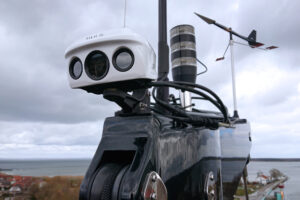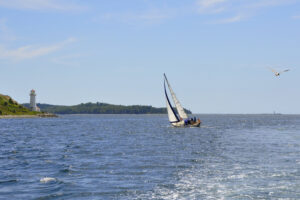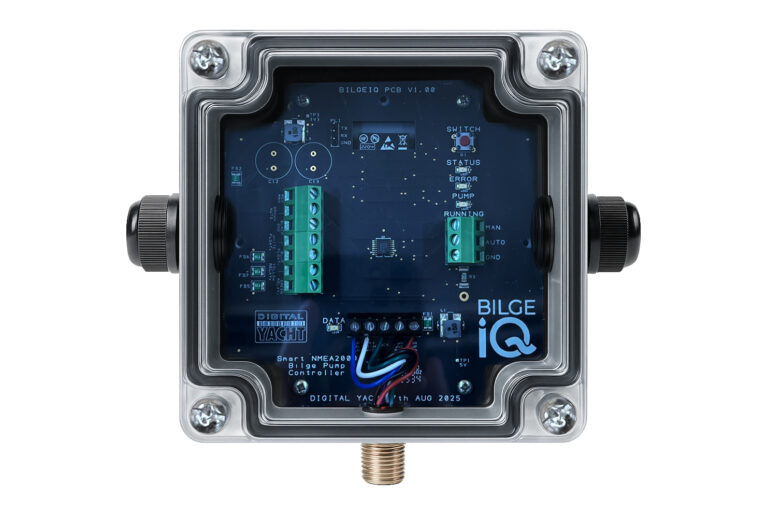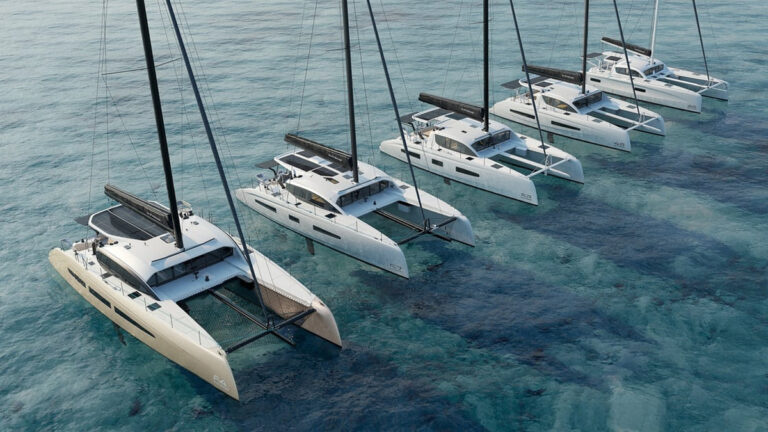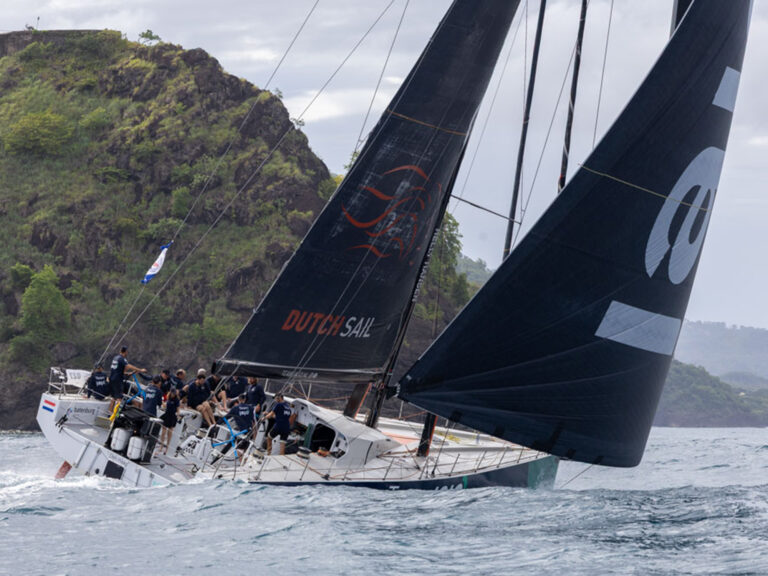
The design attributes of the new Dehler 36—straight sheer, long waterline, powerful 9/10ths rig—add up to a practical compromise between comfortable cruising and performance sailing. For example, the Dehler’s relatively light displacement and 737-square-foot working sail plan give her a sail area-to-displacement ratio just over 21 and the ability to scoot in the 10- to 12-knot conditions so commonly found in many summertime coastal cruising grounds. On the other hand, her modest tankage and storage space is more in keeping with short-term cruises than a long-term liveaboard lifestyle.
The Dehler’s moderately light displacement is achieved using a carefully crafted balsa-core sandwich structure for both the hull and deck elements. A thorough look at the glasswork attests to the hand-layup skills of the crew that built the boat. It meets European Union Category A offshore specifications. The hull/deck joint is actually secured with FRP laminate while both parts are still in the mold, creating a rugged monocoque structure. Stainless-steel hardware is fastened to aluminum flat stock that’s been bonded to the inside of the deck. Thread sealant is used to tame the corrosion associated with dissimilar metals and the effects of seawater.
The modern canoe-shaped underbody allows a 27-horsepower Volvo sail-drive diesel auxiliary to be tucked beneath the companionway steps, delivering efficient propulsion (6.4 knots at a fuel-saving 2,200 rpm). However, as with all sail-drive installations, the potential exists for corrosion among the dissimilar metals.
Under sail, the Dehler 36 comes into her own. Her 414-square-foot mainsail proves to be an asset on and off the wind. There’s enough power from the big main and 140-percent genoa to keep the boat going in light air, even as the wind falls aft of the beam. In 8 to 10 knots of true wind, we close-reached at 6 to 7 knots. The reefing system on this big main is efficient—a good thing, as it should get a lot of use.
Rugged lifeline stanchions and effective nonskid on the well-designed deck add to the safe-sailing potential built into this vessel. However, much of the coachroof surface was slick gelcoat rather than the nonskid used on the main deck. A company rep said that with either a furling mainsail or the “all lines aft” running rigging, a crewmember didn’t have to climb on the coachroof while under way. Still, I always seem to find some reason to hop up on the coachroof and tweak something and would prefer to have seen a less-hazardous surface.
The Dehler 36 carries her beam well aft, affording room for a double berth as well as a utility space to reside side-by-side beneath the cockpit. (Another option, pictured above, specifies a pair of aft doubles.) Limited storage space keeps a payload from bogging down the vessel’s sailing ability. Fitted with opening ports that are great at anchor, the Dehler 36 isn’t optimized for warm-weather underway ventilation—fine for temperate climates, but not ideal for warm-weather places.
The Judel/Vrolijk design team has succeeded in blending the performance characteristics of a club racer with a cruise package. This marriage results in a versatile 36-footer that’s fast and fun as well as comfortable to cruise close to home as well as farther afield. Combine this with a $146,167 base price, and you start to see why, when it comes to describing the Dehler 36, many feel that the size and the price are just right.
Cruising World technical editor Ralph Naranjo is a Boat of the Year judge.

